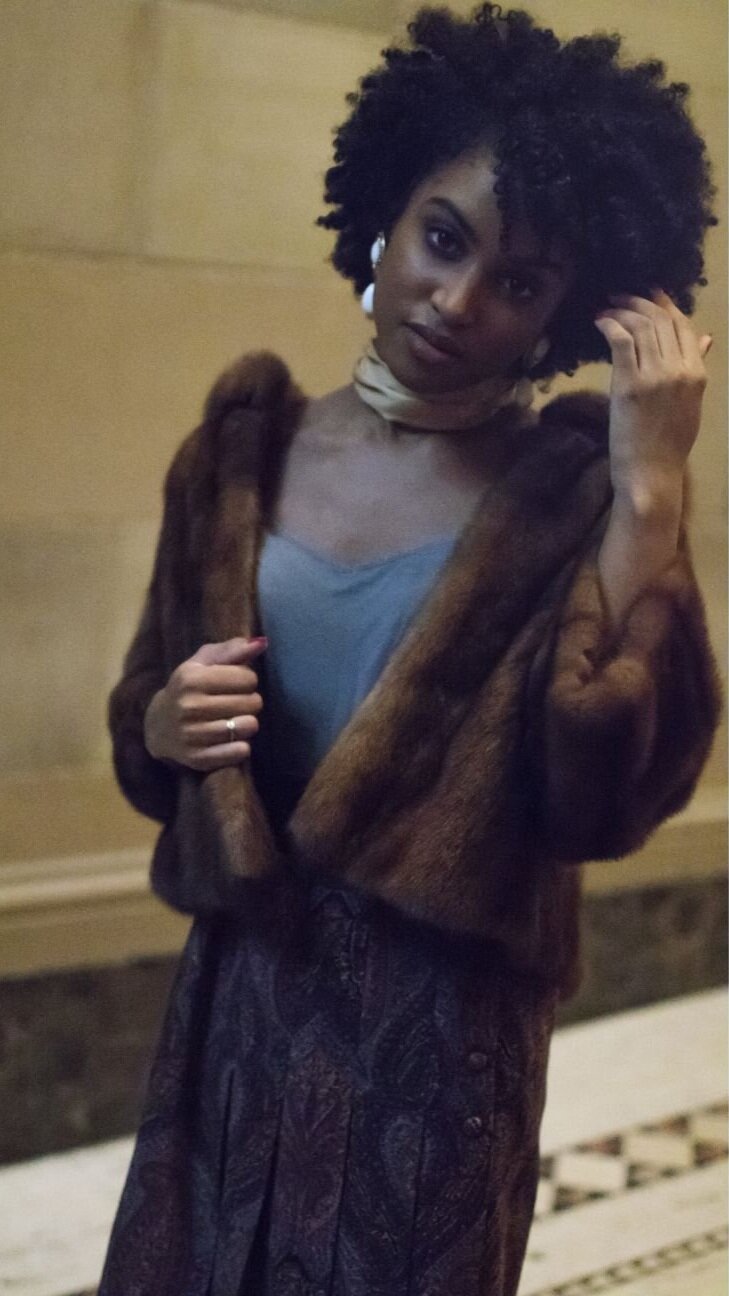Real Fur to See Resurgence in Canada Amid Perception Shift: Opinion
/Photo: fendi
By Mina Ely
“I’d rather go naked than wear fur.” A popular slogan from the 1990’s and early 2000’s. Celebrities such as Pamela Anderson, Olivia Munn, Steve-O, Pink, and many others posed nude in large scale campaigns in support of People for the Ethical Treatment of Animals (PETA). With this, we saw a large drop in fur sales. Major fashion labels including Versace, Gucci, Diane Von Furstenberg, and retailers such as Net-A-Porter have since ditched the fur.
But today, a backlash is brewing.
When I was three years old my family relocated from Russia to Canada. Russia is the origin country of the $100,000 Sable coat. Russian sable are the most exquisite specimen, only found in the Russian wild. For many Russians, fur was part of their culture. In Russia, fur was often a necessity for survival in the extremely cold climate. You didn’t have to be wealthy to own a fur coat, it was just a staple in many people’s wardrobes.
Growing up in Toronto I remember my mother wearing fur. Any fancy event or outing she would wear her Mink coat. To her, it was a staple. In our society it was a subtle nod to defining your elegance and sophistication. There is something about the uber luxury of mink that sustains in our current culture today. Mink now comes in all styles — contemporary bombers to luxury duster coats. Suitable on both a young trendy millennial and a more mature baby boomer.
The apple doesn’t fall far from the tree. I also love the elegance and sophistication of wearing fur. As a luxury stylist, I love to put my clients in a gorgeous mink bomber with a pair of high waisted jeans and Louboutin high boots. I curate my client’s wardrobes based on feel good and look good items, and I am not afraid to endorse this industry that I believe in.
I was recently in New York where I connected with an independent furrier who helped me to design my own collection of gorgeous, unique mink jackets.
I absolutely adored the designs and have decided to bring my own exclusive collection to the Canadian fashion retail market. Introducing this collection to the Toronto Fashion market, specifically, has exposed me to the controversy of the pro and anti fur movements.
In the height of a climate crisis, we find more and more people taking an approach towards sustainable fashion. There are many arguments for and against the fur industry. Often the research is biased depending on who the article is published by.
Faux fur is a far bigger threat to wildlife than the real thing. This is because most faux-fur and “vegan leathers” are made from petrochemical based materials such as PVC and polyester — fabrics that are made from liquid plastic spun into yarn or pressed into a shoe. These plastics can take up to 200 years to decompose, and they create microfibres that are too small to be filtered in our water treatment systems. They then become micro-plastics which shed into the habitats of many animals, while also contaminating our waterways, fills, and landfills. A study from UK group “Friends of the Earth” estimates that 1600 tones of micro-plastics were shed from synthetic fabrics such as polyester in 2018 alone. People think of fake fur as a disposable thing. They buy it, wear it a few seasons and throw it away. Real fur is more often recycled into new coats, given to grandchildren and passed on through generations.
photo: fashionista
Unlike faux-fur the real thing biodegrades. Biodegradation is the degradation of a material on a chemical level. Disintegration is the physical fragmentation into smaller pieces. Meaning your real fur jacket will disappear once you send it to the landfill but your faux-fur will live on forever - and not in the way we want.
In today's market, 55% of buyers are under the age of 44. With the millennial push in the buying market, many designers swore off the fur in hopes of attracting the booming consumers. However, there is a caveat - the same brands continue to work with shearling and leather. A suggested google search when researching fur is “why is fur bad and leather ok”. This is said to be due to the fact that materials made from sheep and cow are considered part of the food chain, making their skin a byproduct and therefore deemed acceptable by the consumer. (Not to mention that mink is also used for fertilizer, feed, waterproofing materials, and even biofuel.)
photo: oscar de la renta
photo: dior
These designers fail to realize that the anti-fur movement has a much larger agenda. They are not just talking about fur, they want to ban leather, wool and silk - all animal byproduct found in fashion. To me, this “furless movement” only seems like a facade to attract a new younger demographic.
We know now that the designer’s approach is ironic seeing that Millennials are driving online fur sales. Over the last two years, we have seen a 30% increase in fur sales from consumers age 38 and younger. The price point of a full mink jacket might be high for this cohort but this doesn't stop them from purchasing fur accessories, something in shoes or fur trimmed jackets. However, 1 in 5 women own a fur coat, and over the past seven years the market has experienced significant gains in men’s fur fashion which now account for 5% of total fur sales.
The number one reason from consumers when purchasing a fur coat is warmth and it is no surprise that in North America top fur sales happen in colder climates such as Canada, and particular parts of the US. A fashion critic named Alden Wicker stated that, “Well-meaning people conflate ‘vegan’ with terms like ‘ethical’ or ‘eco-friendly’, as if they can be used interchangeably.” A mistake big label designers seem to be making. 8% of our total global emissions are contributed to the fashion industry alone so just because a piece of fashion is animal free, doesn't mean it’s not hurting animals in other ways.
photo: balmain
photo: dolce & gabbana
In the same breath, many designers have admitted to philosophical conflict knowing that fake fur is worse for our environment and are not declaring themselves fur-free. This is due to the fact that the history of fashion proves a pendulum swing in the trends of fur in fashion. Designers don’t want to be hypocritical releasing a fur line only now that fur is on the up rise. The legendary Karl Lagerfeld stated, “Fake fur pollutes the world more than anything else.”
There are more designers working with fur today than in the 80’s. In 1985, only 42 designers were creating fur fashions. Today there are over 500 designers featuring fur in their collections. Over 65% of A/W 2018 catwalks in New York, Milan, Paris, and London showed fur. Brands such as Alexander Wang, Oscar De La Renta, Dolce & Gabbana, Fendi, Moncier, Roberto Cavalli, Balmain, Dior, and Valentino are amongst others in this group. If the consumer market wasn’t interested in fur, would more than 50% of designers still choose to show these garments on the runway?
Despite what the protesters are saying, fur is still a product in demand. The market wants more and a backlash against the anti-fur movement is brewing. It is crucial that both consumer and designer are relying on real information and facts, not “faux” ones.
With twenty years in the luxury retail industry, Mina Ely has a broad understanding of the retail and fashion world. As a Luxury Retail Sales Specialist, Retail Strategist and Luxury Wardrobe Consultant, Mina provides a wide range of services to her portfolio of executive clients. Mina firmly believes that retails core values stem from the overall experience of the consumer and her goal is to ensure that the clients expectations are exceeded every time. Mina brings expertise that span the width of the business. Giving back to the community is important to Mina so she is passionate about partnering with charity organizations and hosting private events with the theme of “Fashion Cares for a Cause” in mind.





















![Retail-insider-NRIG-banner-300-x-300-V01-3[2].jpg](https://images.squarespace-cdn.com/content/v1/529fc0c0e4b088b079c3fb6d/1593476525034-QRWBY8JUPUYFUKJD2X9Z/Retail-insider-NRIG-banner-300-x-300-V01-3%5B2%5D.jpg)
![Retail-insider-NRIG-banner-300-x-300-V01-2[2].jpg](https://images.squarespace-cdn.com/content/v1/529fc0c0e4b088b079c3fb6d/1593476491497-W6OZKVGCJATXESC9EZ0O/Retail-insider-NRIG-banner-300-x-300-V01-2%5B2%5D.jpg)
![Retail-insider-NRIG-banner-300-x-300-V01-4[2].jpg](https://images.squarespace-cdn.com/content/v1/529fc0c0e4b088b079c3fb6d/1593476508900-TJG5SNQ294YNOCK6X8OW/Retail-insider-NRIG-banner-300-x-300-V01-4%5B2%5D.jpg)